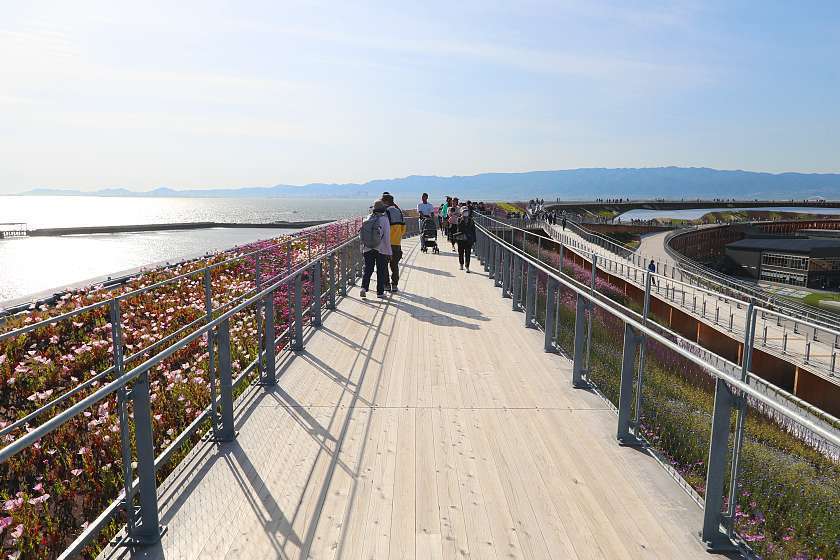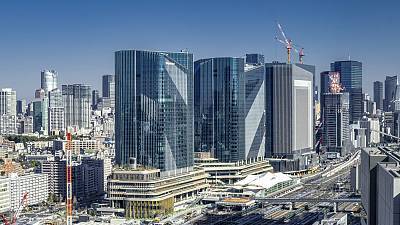A visit to the Osaka Expo
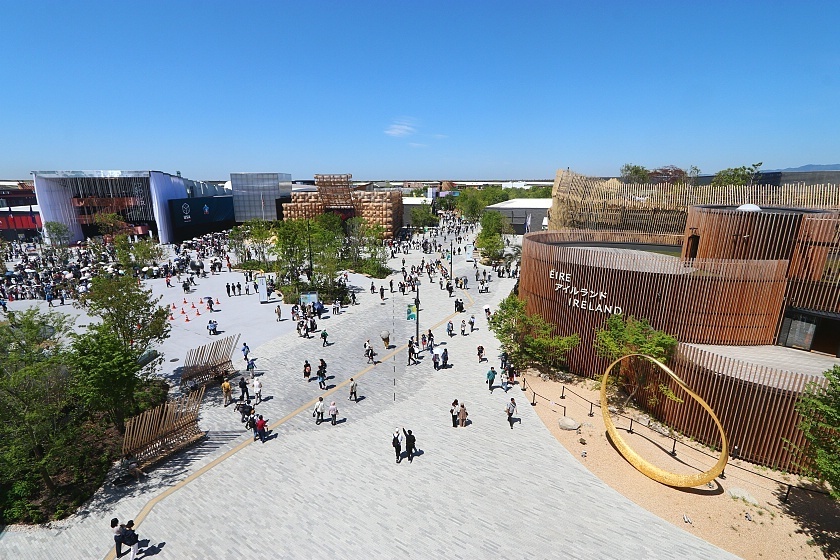
One of Japan's grandest and most anticipated events, the Expo 2025 serves as a visually spectacular forum for Japan and other participating countries to showcase their lifestyle and identity, with a particular focus on technology and innovation surrounding this year's theme of "designing future society for our lives".
Built on a suitably grand scale - the venue for the expo covers over 1.5 million square meters, equivalent to around 217 soccer fields - the six-month event has also been hyped as one of the most globally inclusive to date, with 161 countries and 9 international organizations agreeing to take part.
Not surprisingly for such a massive undertaking, the expo has attracted enormous attention from domestic and international media alike, drawing its share of criticism as well as hype, not least for the ballooning cost to Japanese taxpayers. Early reviews from visitors have only amplified this mixed impression, with many praising the design ingenuity on display while complaining of long queues, overpriced food and difficulties using the official website and app.
With all this in mind, I was very excited to spend two days at the Expo recently and experience it for myself. In this article, I'll describe how that went, some aspects I particularly enjoyed and a few tips to help you get the most out of your own visit.
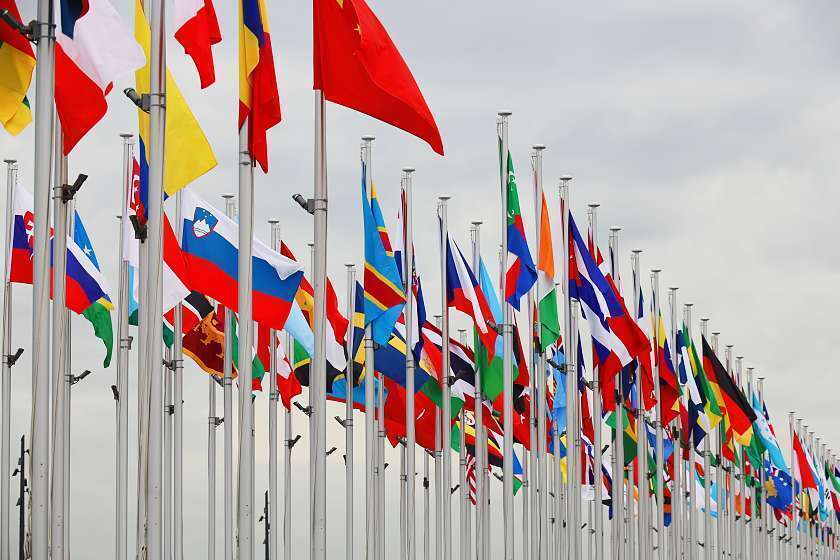
For anyone thinking of including the Expo on their Japan itineraries, the very first step will be to purchase your tickets. This can be done via the official website or through various online sellers including Klook.
Located on the artificial island of Yumeshima in Osaka's bay district, the expo site itself can be accessed from the east side by the newly extended Chuo Subway Line, or from the west via one of several specially arranged shuttle buses, departing from eleven separate points around the city and bookable through the KANSAI MaaS app.
Opting to try each method on a different day of my visit, I found little to choose between them other than one's own starting point and mobility level - the subway was fairly busy and I had to stand for the duration of my 20 minute ride along the Chuo Line, but it is also easily accessible from anywhere in the city and required no reservation or additional steps. The bus ride meanwhile took about 30 minutes and may have been more relaxing - at least once I was on board - but required advanced booking through an unfamiliar app and I had to depart later than I would have liked due to the limited number of seats.
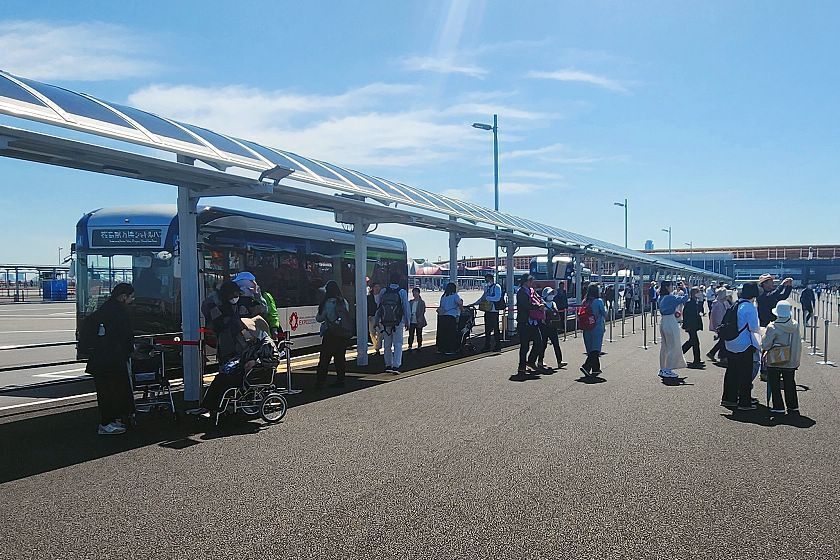
Arriving into the sparklingly new Yumeshima Station on the first day, I appreciated the nice visual design, the scattering of large screens and the long, linear concourse - ideally laid out to unspool a heavy load of passengers into a brisk and orderly flow. The picture as I emerged at ground level seemed a bit more rushed and chaotic, but it still took only about 20 minutes to make my way through the initial queue to the main gate, including the security scans which were smoothly handled.
With both days of my visit falling on weekdays, I found the crowding levels to be comparable with a busy street in Tokyo, or perhaps a typical day at Tokyo Disneyland - enough to have to think about where I was going, but not so much as to feel blocked off, and tipping over into active discomfort only during the climactic lightshow and after, as I made my way back to the station.
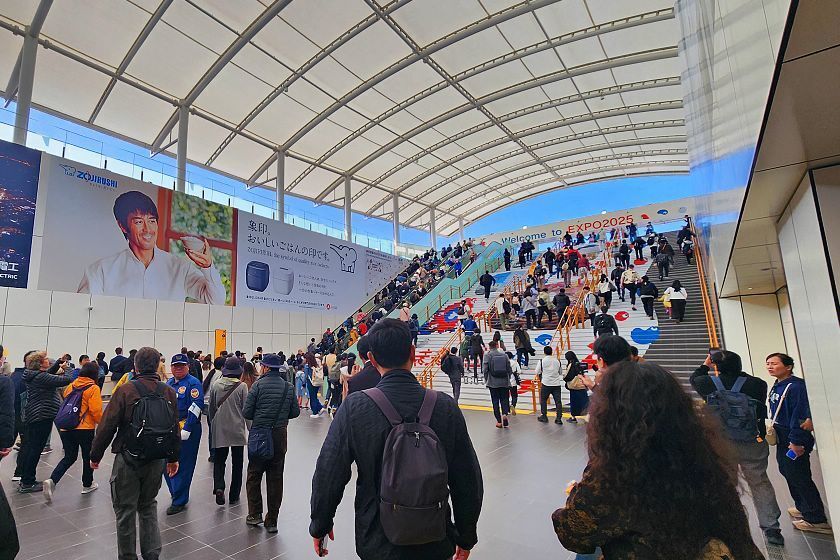
Once through the gate, I couldn't help but be drawn to the Grand Ring - the centerpiece of the Expo, officially recognized as the world's largest wooden architectural structure. 22 meters in height and a jaw dropping 2 kilometers in circumference, the massive structure encircles the Expo's main area and forms a pedestrian highway of sorts, easing some of the pressure on the busy central avenues.
Created by Azusa Sekkei - the major architectural company also behind the National Olympic Stadium and Terminal 2 of Haneda Airport - the Grand Ring combines modern engineering elements with traditional carpentry, using the same style of traditional joinery used in temples, shrines and other historical buildings.
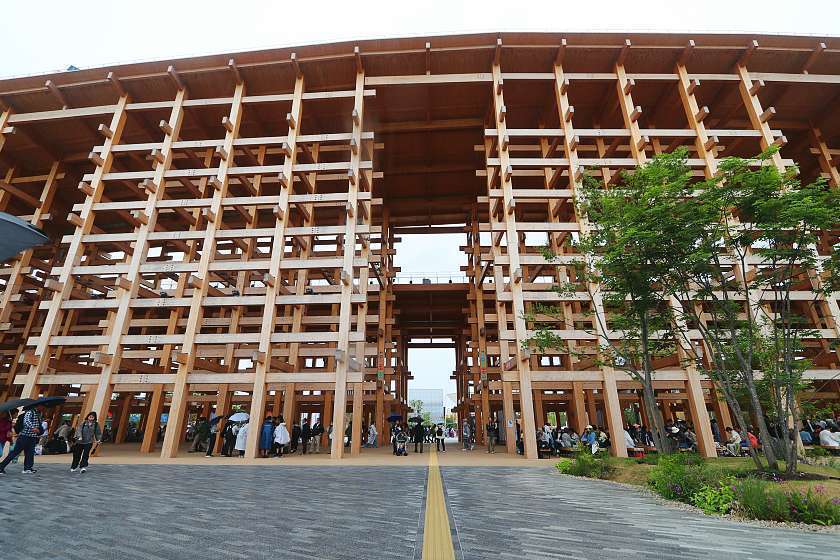
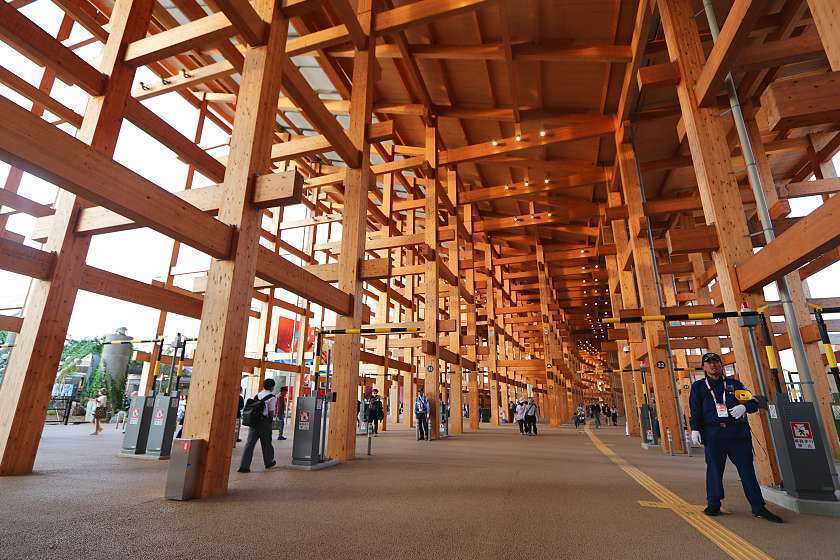
Strolling along the top of the ring - a kind of floating promenade with flower gardens and sweeping views both to the inside and out - was easily one of the highpoints of my visit and a great way to orient myself. The area within the ring is divided into five themed areas - "connecting lives", "empowering lives", "saving lives", the "signature zone" and the central "forest of tranquility" - the latter a heavily landscaped space with wooded pathways centered on a circular pond.
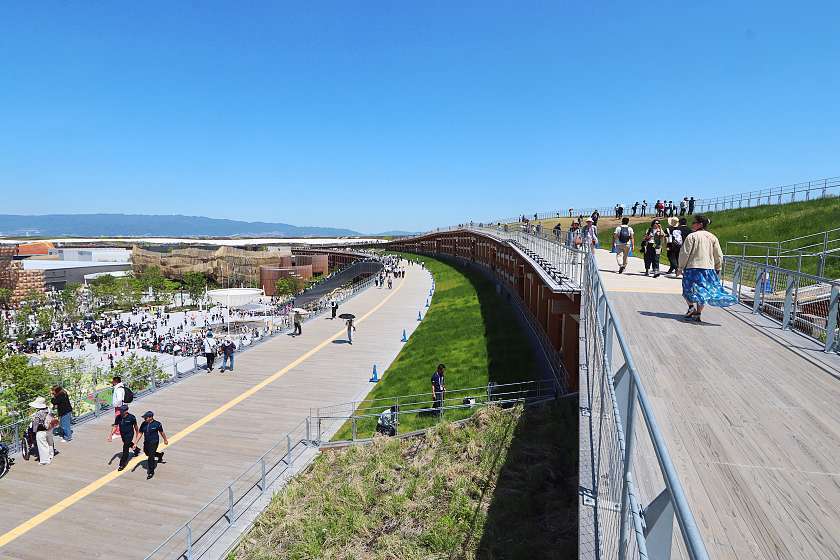
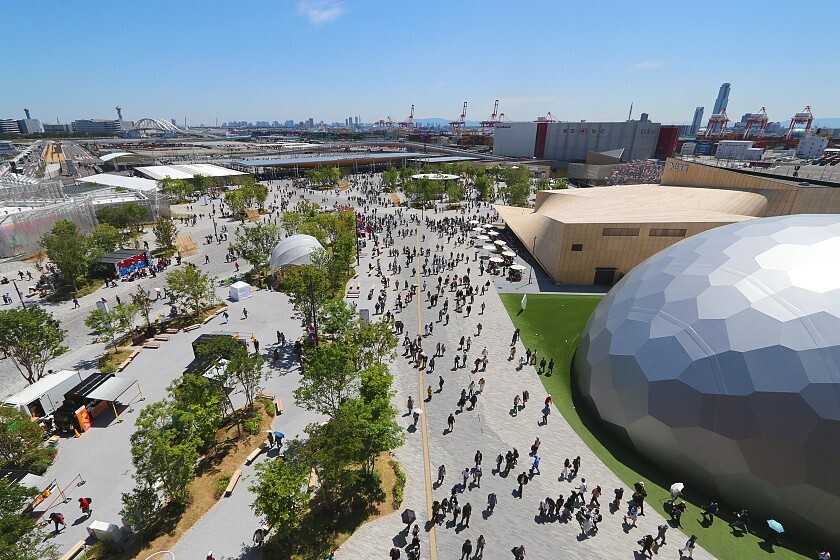
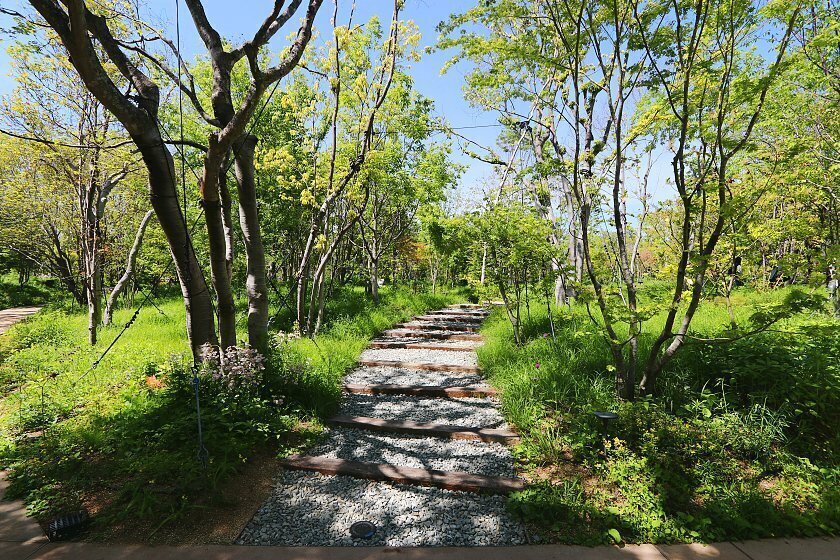
forest of tranquility
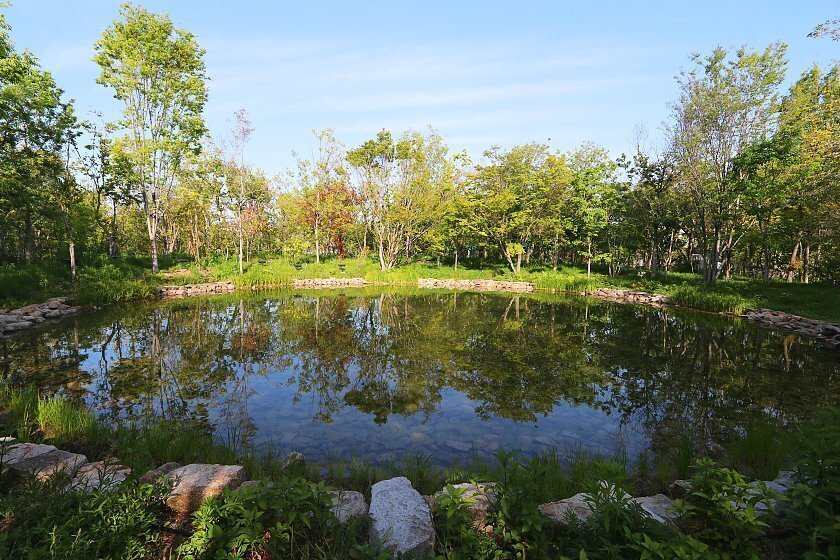
Sitting outside the ring are the East Gate and West Gate zones, each featuring a number of government and corporate pavilions, as well as access to the subway station and shuttle bus terminal respectively, and lastly the "Future Life Zone" located just beyond the West Gate.
As many of the pavilions, exhibitions and special events within the Expo require advanced reservations, visitors will want to at least try and make some through the official website. From here, you can enter two-month or seven-day lotteries, check for available slots on a first-come, first-served basis from three days before your visit or try to make a same-day reservation. Note however that the latter type is limited to one at a time, so you'll need to complete each visit or experience before making the next.
With the many eye-catching pavilions being such an important part of the Expo experience, I was naturally keen to get some reservations for myself but despite trying the seven-day lottery and repeatedly checking for same-day timeslots, I wasn't able to get even a single one. To judge from a few conversations with fellow visitors, this was far from unusual, with the two-month lottery at least anecdotally sounding like the most fruitful option.
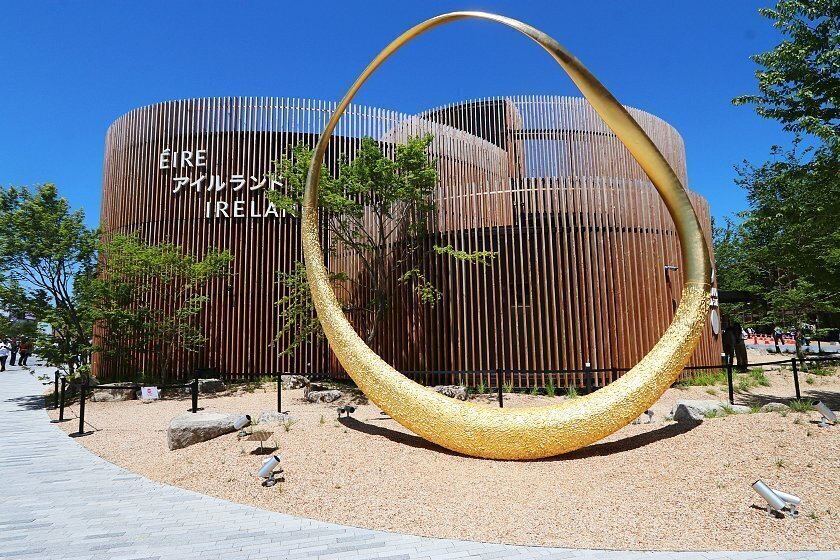
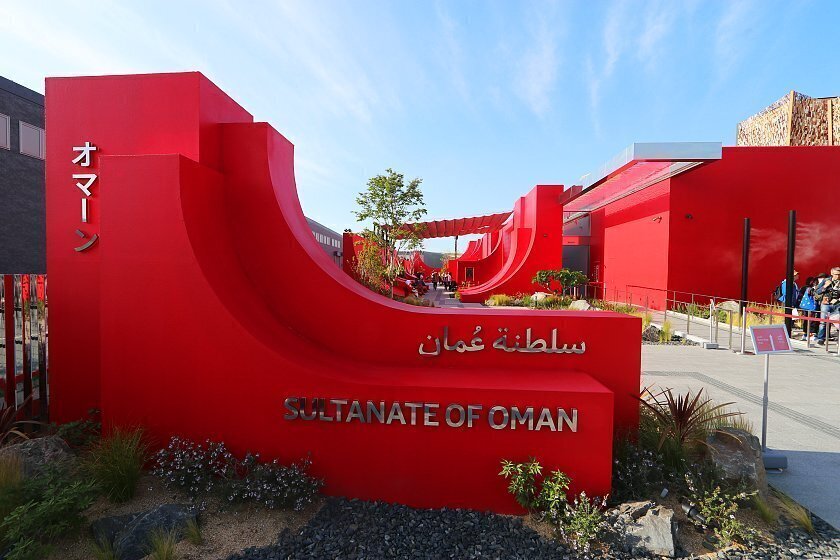
Several of the pavilions I had been most excited about in the lead up to my visit were in the "signature" category, meaning they belonged not to countries but some of the Expo's main producers in the private sector, each showcasing their own optimistic visions for a sustainable and eco-friendly future. Sadly, these were also some of the most in-demand, and the opportunity to see inside never came.
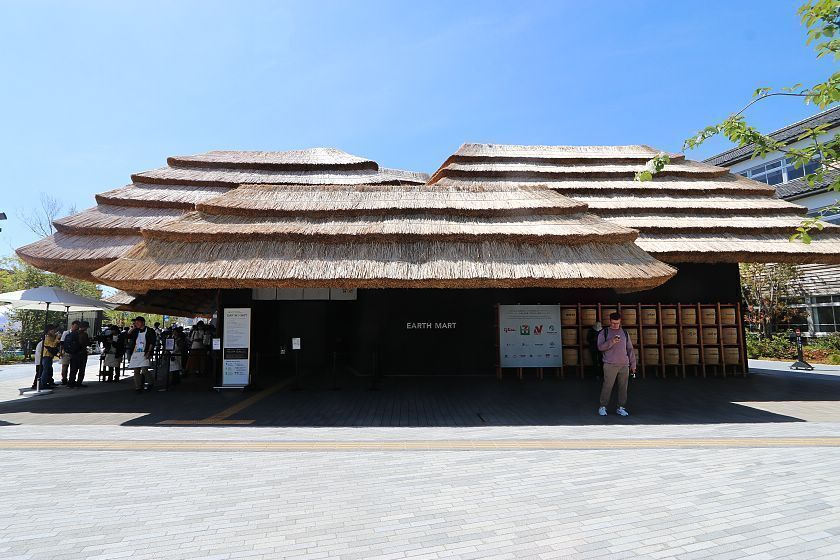
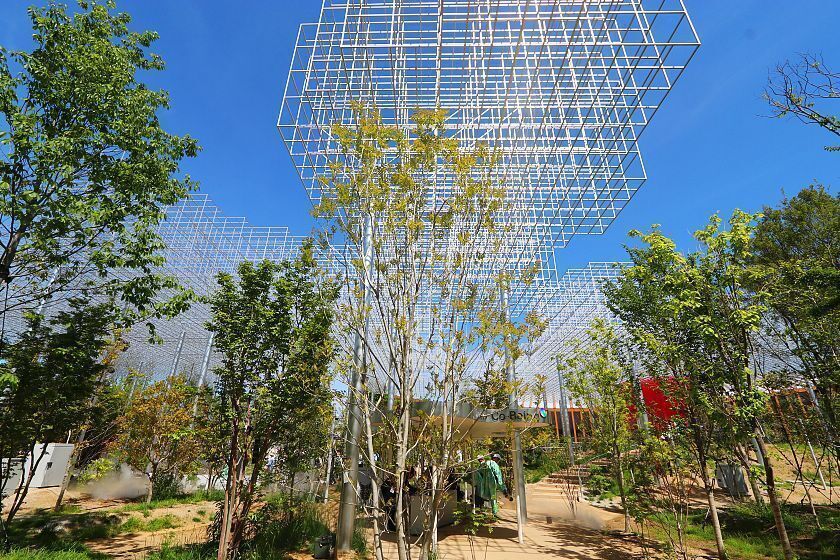
Fortunately, many of the national pavilions do not require reservations, with many allowing visitors to simply enter a line. In my experience, wait times ranged from as little as 15 minutes to an hour and a half, although other reviewers have reported having to queue for well over two hours at peak times.
The first attraction I made it into was the Kuma Kengo designed Qatar Pavilion. Said to be inspired by the traditional Qatari boat known as a dhow, the exterior features a stiff, white fabric mounted over a timber framework made with Japanese joinery, while shallow water features and a series of arches on either side reference the country's coastal scenery. Inside the pavilion was rather less inspired, comprising a series of panels showing landscapes and items of economic or cultural interest, wrapping around a modestly sized theater area showing a short promotional film.
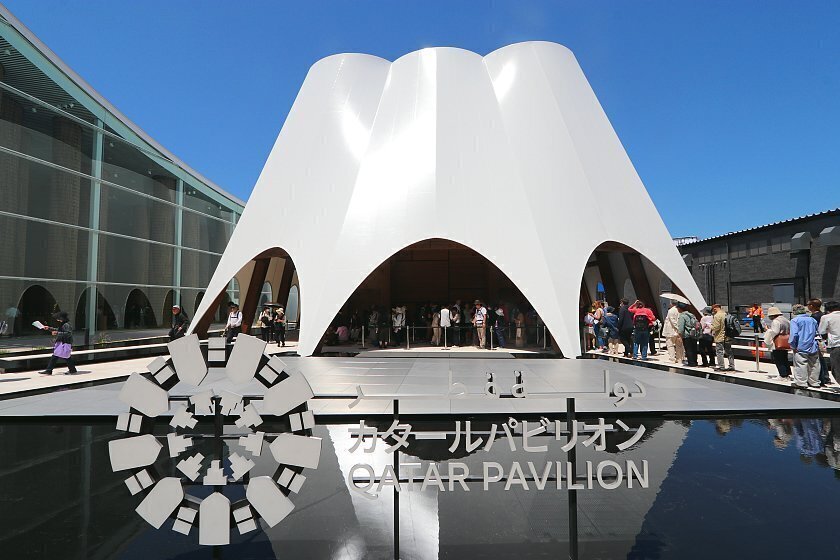
Also taking its inspiration from the design of a small boat, the Bahrain Pavilion was constructed from around 3,000 pieces of plain Japanese cedar, assembled using a blend of Japanese and Bahraini woodworking techniques and without concrete or adhesives. Described as a "sensory gallery", the pavilion's exhibition was among the most personal and absorbing that I saw during my visit, with an interesting selection of goods, materials and handcrafted items to touch, feel and even smell.
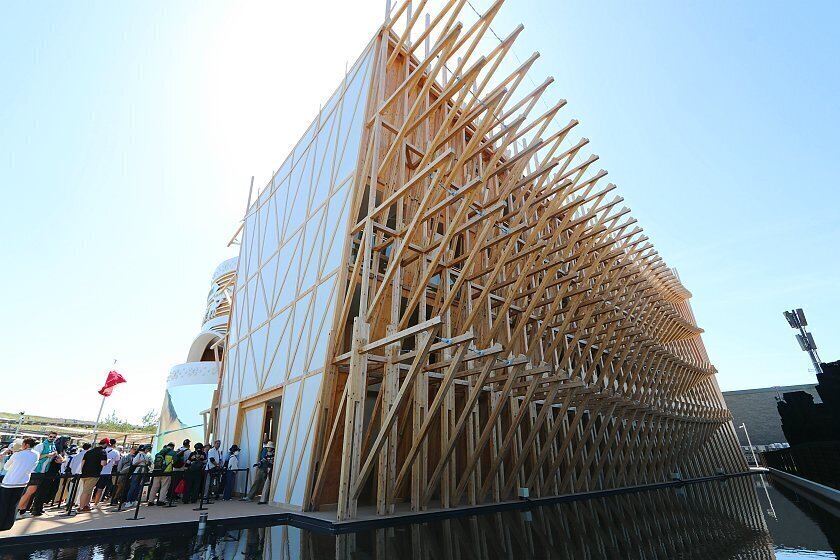
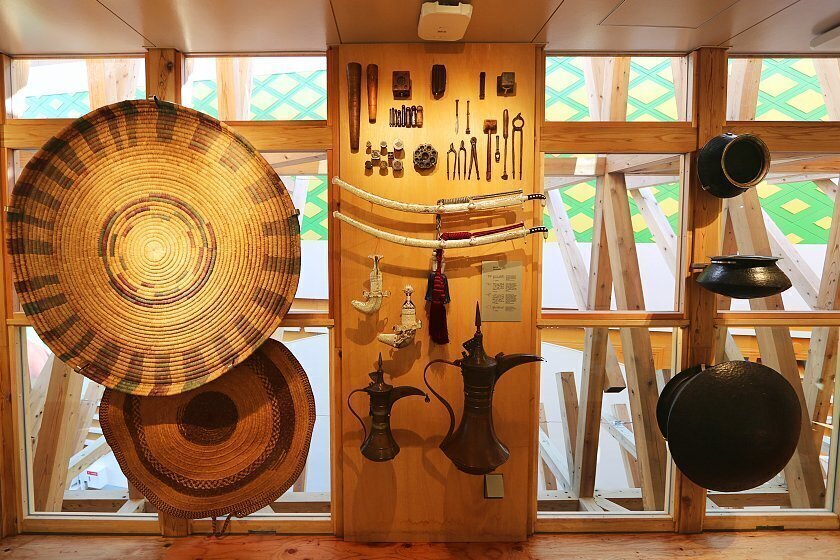
One design that stood out from the others was the Spain Pavilion, even if the blue tiles on its bold, colorful exterior made me think more of sunny days by a hotel pool than its stated influence of a mediterranean agora. Inside, the exhibition is nominally about Spain's maritime tradition, but is at its best presenting the country's cultural and tourist highlights in lively and eye-catching style.
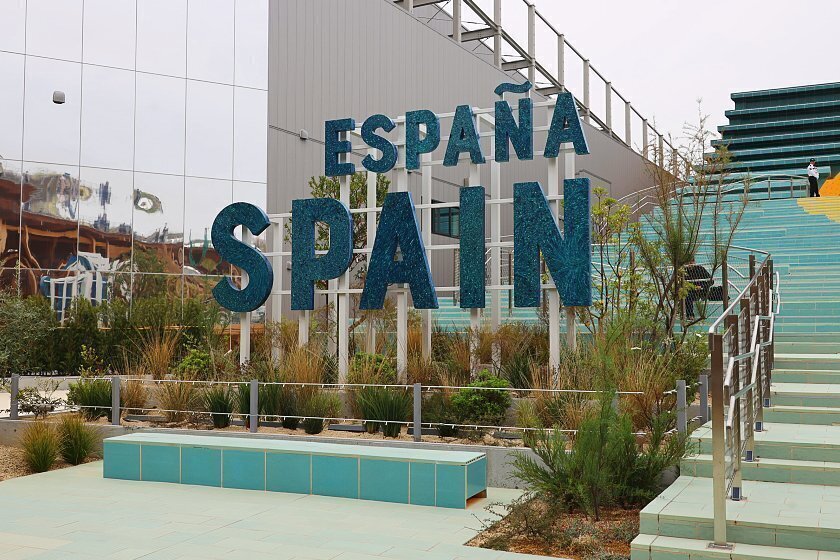
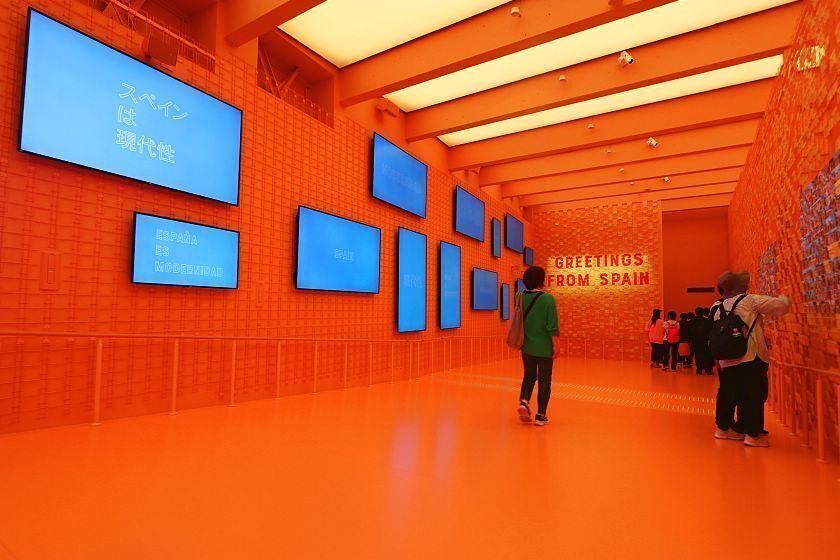
Rather more low-key in its approach but still memorable was the Uzbekistan Pavilion, a triangular structure capped with row upon row of pillars, giving it a rather grand look. After a few rather uninspiring displays about national resources, visitors are taken up in a heavily projection-mapped elevator to the upper floor, where they can walk among those same pillars creating a pleasantly meditative mood. In a nice touch, you can also touch your smartphone to some of the pillars to find out exactly where the timber for each was sourced.
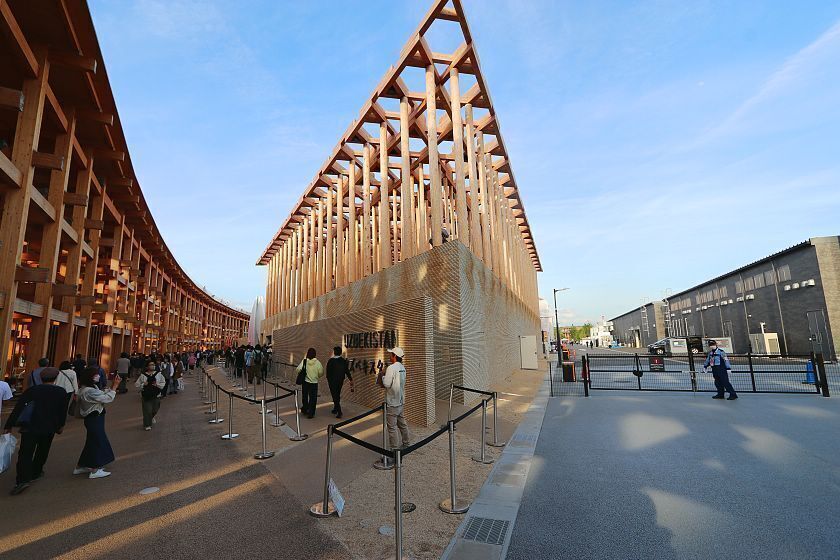
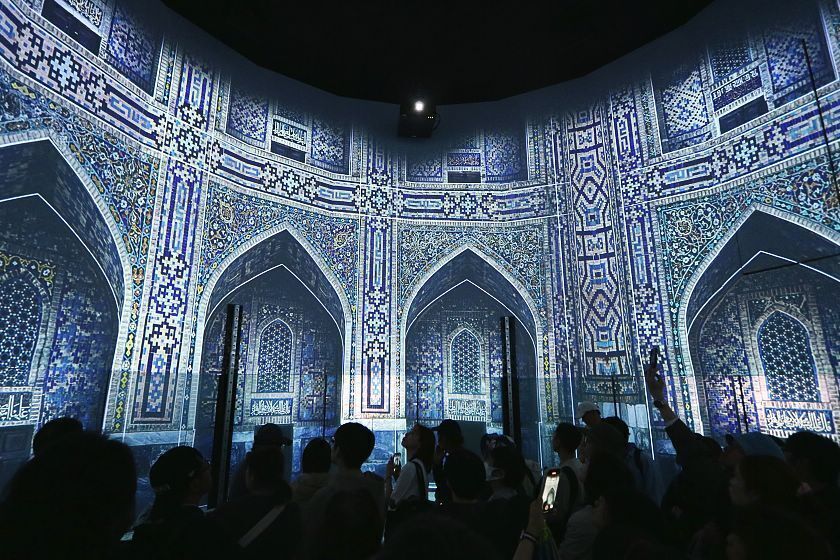
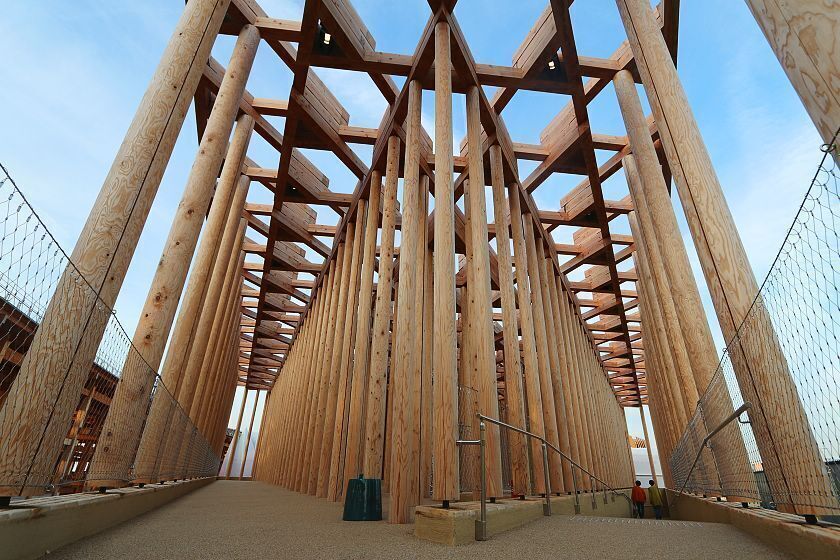
Of all the ones I visited, my overall favorite was probably the UAE Pavilion. Although light on actual content - sometimes less really is more - I loved its design, which was not only visually appealing but felt like a thoughtful reflection of its stated theme: humanity's journey from traditional roots to a technology-based society.
Set inside a minimalist glass facade, the structure is built around 90 tall pillars, each created from palm fronds gathered from across the Middle East and North Africa, so that exploring the interior feels like taking a stroll through a bazaar, a forest or some imagined landscape. As a showcase for sustainable technology, the building also incorporates solar power, rainwater recycling systems, natural ventilation and datecrete - a sustainable alternative to concrete made from crushed date seeds.
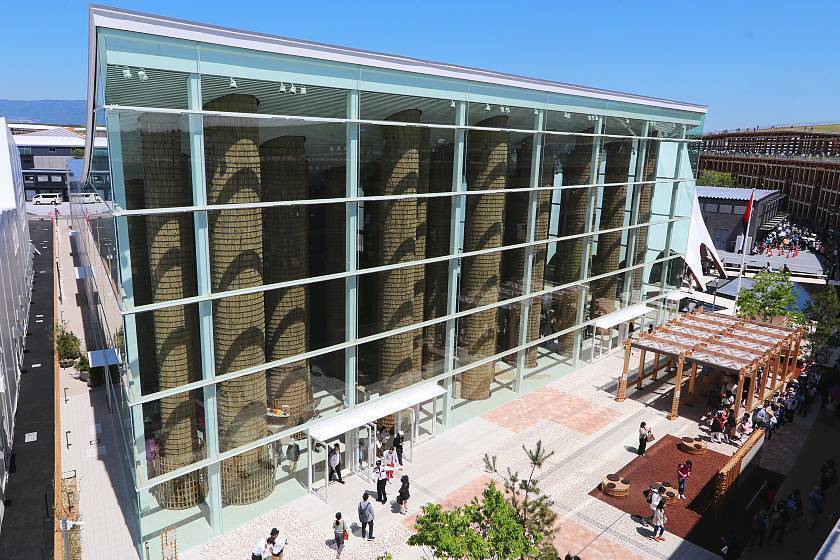
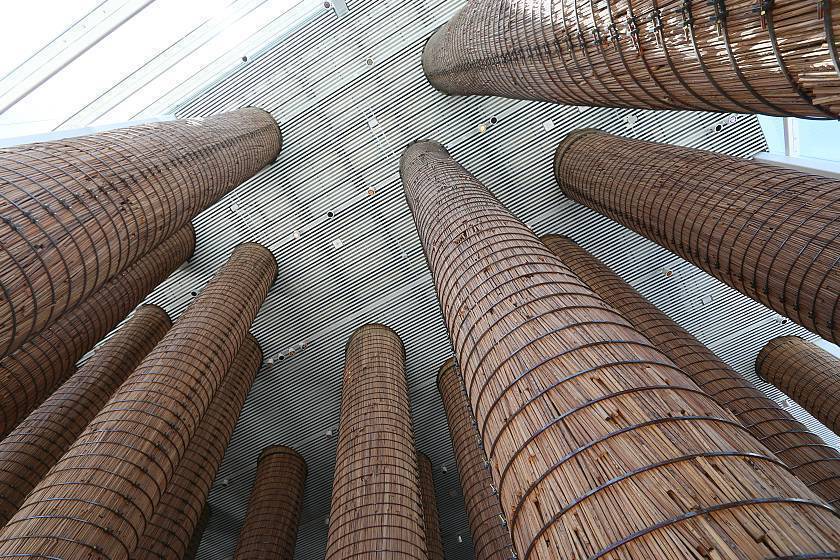
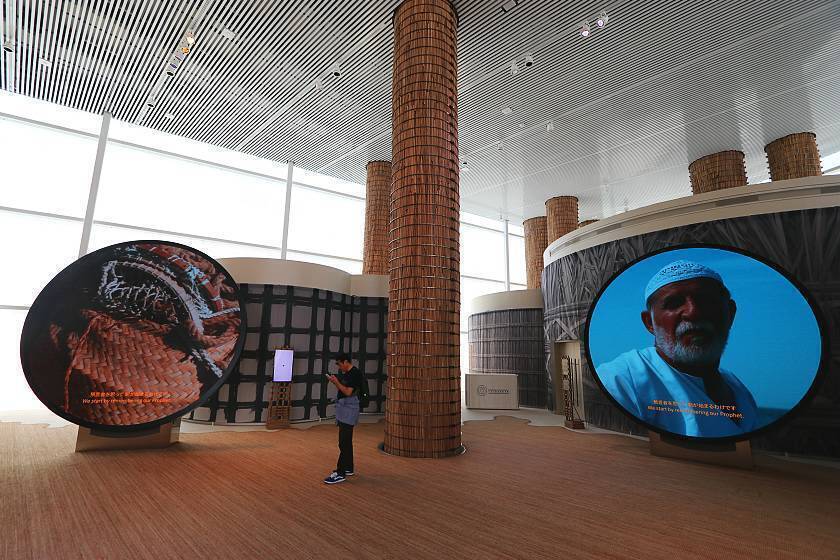
Like many of the national pavilions, the UAE Pavilion also features an attached restaurant, whose menu was appetizing enough to lure me into a queue of over an hour, far longer than the one for the main space itself. Here, I found myself splurging on a bento of sorts with lamb ouzi, harees salad, Emirati flatbread and a traditional dessert of dates, cardamom, and roasted flour flavored with saffron, all delicious and priced at an eye-watering 4,700 yen.
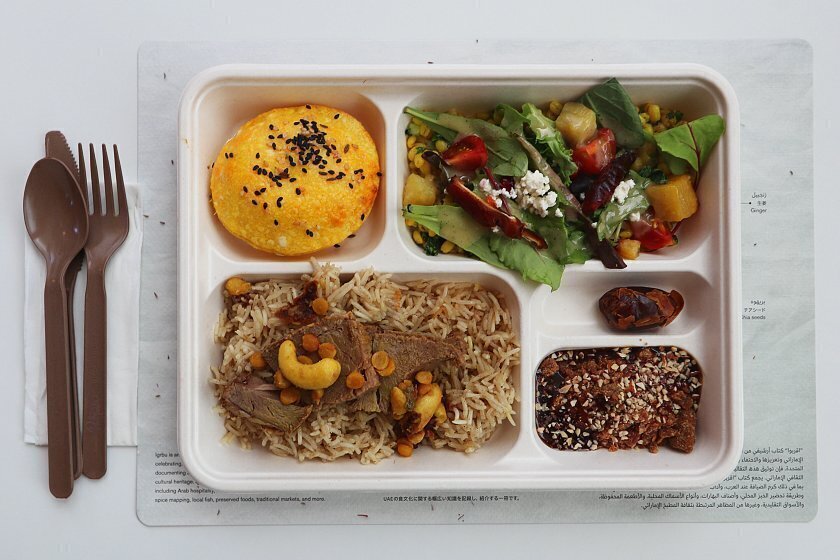
While less obviously flashy than its buildings and themed plazas, the Expo comes with a wide range of smart solutions built in, highlighting its themes of sustainability and innovation while directly contributing to the user experience. Of particular importance however is the absence of cash payments, meaning that any purchases will need to be made with credit or debit cards, IC transport cards, mobile payment apps like Apple or Google Pay, or prepaid retail cards like Rakuten Edy. Over 60 IC transportation card top-up machines can be found throughout the event space and a limited number of prepaid cards are available for purchase close to the east and west gates.
With so much to see and do, it can be easy to get a bit overwhelmed or even lost altogether. For this reason, another extremely useful yet easily overlooked resource is the team of volunteer guides, who can usually be found at regular intervals throughout the Grand Ring.
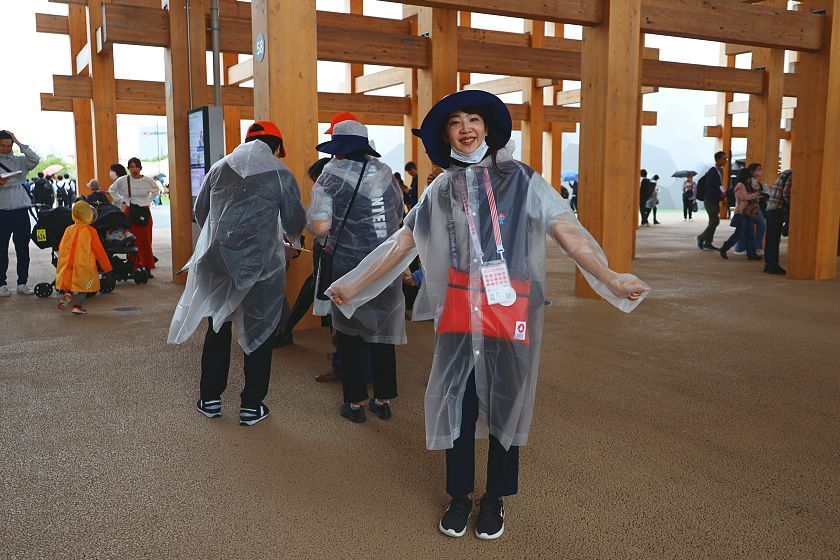
With my time at the Expo drawing to a close, I took a seat along the Water Plaza - a concrete terrace leading down to a 300-meter stretch of water at the southern end of the main area. Here, clustered around a mysterious rectangular frame are around 300 jet fountains which, combined with projection mapping, surround sound and pyrotechnics, create a spectacular and immersive closing display entitled "Midnight Rainbow".
Running twice-nightly and lasting about 25 minutes, the show tells the story of a child named Ao who, together with a spirit guide representing air and water, travels to a mythical island where all forms of life gather for a magical festival celebrating the interconnectedness of life. Despite the hokey premise, it was a big, bold finish to the day and closed my Expo experience on a strong note.
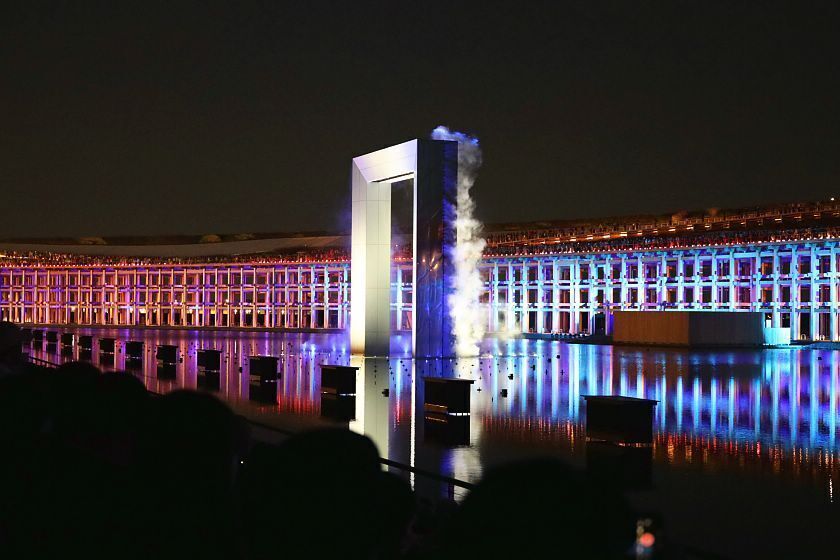
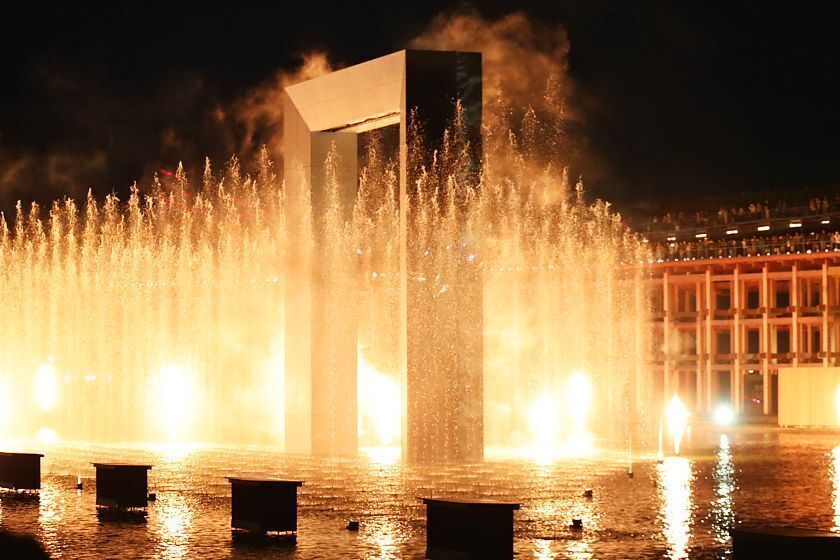
So, did the event feel like a success? Certainly it has had its share of issues, from the overly complicated app to a frustrating overall lack of availability. While no official data for positive vs negative reviews has been released, the Expo currently has just two out of five stars on tripadvisor.com and the discourse surrounding it feels as highly polarized as ever. For this visitor though, the displays of architecture and engineering, the beautiful landscaping of the forested areas, the sheer scale of the endeavour, all added up to something unforgettable and highly worthwhile.
